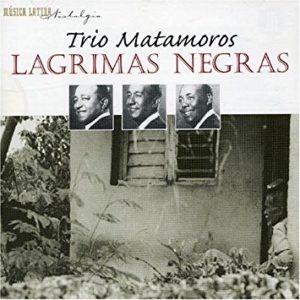 THE SAD STORY OF THE SONG “LÁGRIMAS NEGRAS” COMPOSED BY MIGUEL MATAMOROS. VIDEO.
THE SAD STORY OF THE SONG “LÁGRIMAS NEGRAS” COMPOSED BY MIGUEL MATAMOROS. VIDEO.
A jewel that has an exciting history behind it. In the year 1930 Miguel Matamoros traveled to Santo Domingo. He was staying in the house of Huéspedes de Luz Saldaña. One day when he heard a woman moan from one of the rooms in the house, he asked Luz why she was crying so heartbroken. She replied that her partner had abandoned her for another.
Right there Miguel inspired this bolero-son that he would popularize in the company of Siro Rodríguez and Rafael Cueto, with whom he had formed in 1925 in Santiago de Cuba, the famous and prolific Matamoros Trío.Lágrimas Negras is not just another piece, it is one of the most versioned songs of the Spanish language.
https://youtu.be/EwVrD_0wy3U
According to Cuban musicologist Odilio Urfé, the main importance of the Trío Matamoros in Cuban music is that it gave rise to the third variant of the Cuban trova complex. That is to say: until the moment when this trio emerged, the Cuban trova was developing in the so-called peasant and song lines. Matamoros defined, promoted and popularized the variant that he called, the trova of son.
The rank of pioneer in its genre is obtained by the Lágrimas Negras bolero when Matamoros incorporates the chorus to its creation so that it can be danceable and introduce the sono montuno in the final part of the bolero, which differentiates it from other works of the author. with a first reflexive-romantic part and, in contrast, the montuno, which gives the dancer the opportunity to freely perform the choreographic figures.
Lágrimas Negras is the work that marks the consolidation of that third variant of the Cuban trova, which is characterized by expressing the constant melodramatic element coming from Buenos Aires tango, which after the First World War spread broadly through Europe and our America in certain competition with other musical genres.
In addition to Miguel Matamoros and his Matamoros Trio, this composition has been covered by countless interpreters including: Compay Segundo, Celia Cruz, Diego El Cigala and Bebo Valdés, Buena Vista Social Club, and Willy Chirino with Oscar D’Leon.
 LA TRISTE HISTORIA DE LA CANCIÓN “LÁGRIMAS NEGRAS” DE MIGUEL MATAMOROS. VIDEO.
LA TRISTE HISTORIA DE LA CANCIÓN “LÁGRIMAS NEGRAS” DE MIGUEL MATAMOROS. VIDEO.
Una joya que tiene detrás una apasionante historia. En el año 1930 Miguel Matamoros viajó a Santo Domingo. Se hospedaba en la casa de Huéspedes de Luz Saldaña. Un día en que oyó los quejidos de una mujer desde unos de los cuartos de la casa preguntó a Luz por qué lloraba aquella mujer de forma desconsolada. Ella le respondió que su compañero la había abandonado por otra.
Allí mismo Miguel inspiró este bolero-son que popularizaría en compañía de Siro Rodríguez y Rafael Cueto, con los cuales había formado en 1925 en Santiago de Cuba, el famoso y prolífico Trío Matamoros.Lágrimas Negras no es una pieza más, es una de las canciones más versionadas de la lengua hispana.
Según el musicólogo cubano Odilio Urfé la importancia principal que tiene el Trío Matamoros en la música cubana se refiere a que dió origen a la tercera variante del complejo de la trova cubana. Es decir: hasta el momento en que surge este trío, la trova cubana venía desarrollándose en las líneas denominadas campesina y de la canción. Matamoros definió, impulsó y popularizó la variante que denominada, la trova del son.
El rango de pionera en su género, lo obtiene el bolero Lágrimas Negras al incorporar Matamoros el estribillo a su creación para que ésta pueda ser bailable e introducir el montuno sonero en la parte final del bolero, que lo diferencia de otras obras del autor. con una primera parte reflexivo-romántica y como contraste, el montuno, que brinda la oportunidad al bailador de ejecutar libremente las figuras coreográficas.
Lágrimas Negras es la obra que marca el afianzamiento de esa tercera variante de la trova cubana, la cual se caracteriza por expresar el constante elemento melodramático procedente del tango bonaerense, que posteriormente a la Primera Guerra Mundial se extendió con amplitud por Europa y nuestra América en cierta competencia con otras géneros musicales.
Además de Miguel Matamoros y su Trío Matamoros, esta composición ha sido versionada por infinidades de intérpretes entre ellos: Compay Segundo, Celia Cruz, Diego El Cigala y Bebo Valdés, Buena Vista Social Club, y Willy Chirino con Oscar D´Leon.
Agencies/David Martin/Catalejo/Internet Photos/YouTube/ Arnoldo Varona /TheCubanHistory.com
THE CUBAN HISTORY, HOLLYWOOD.





